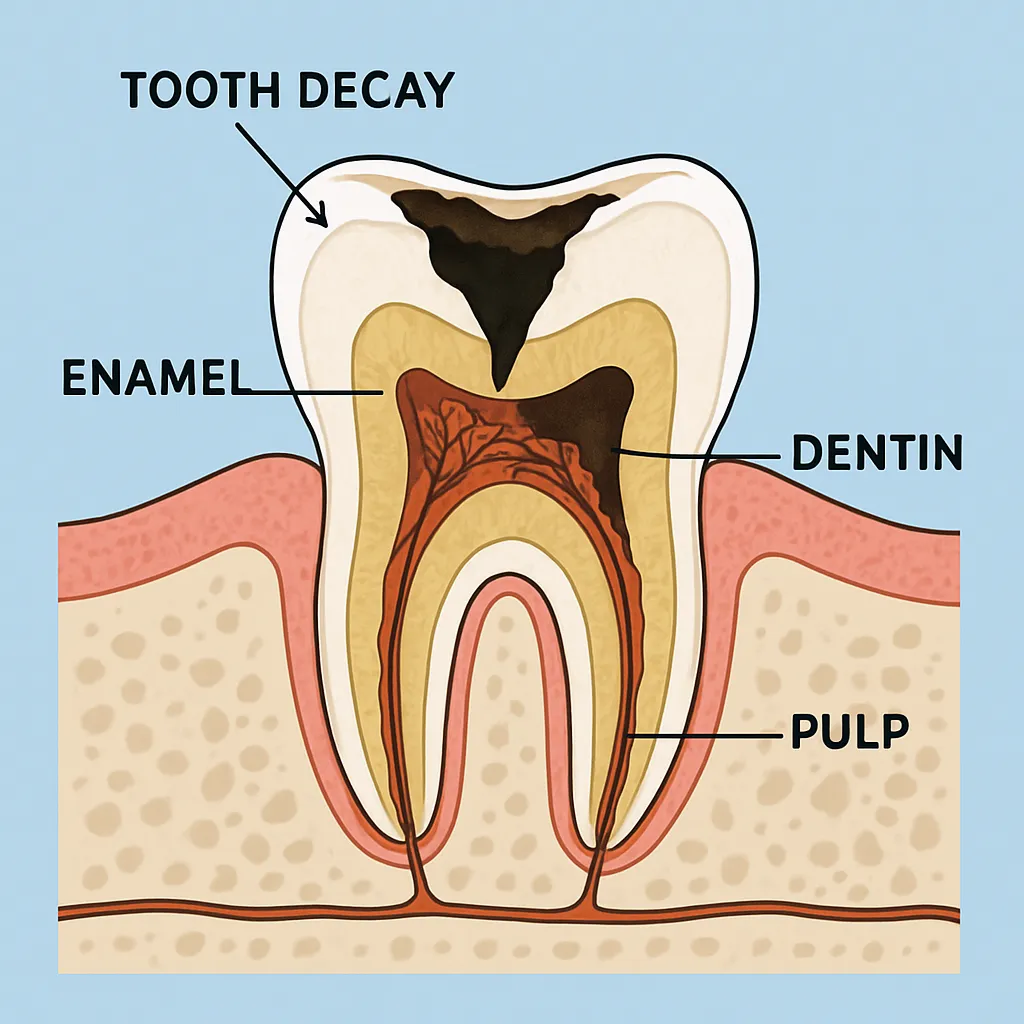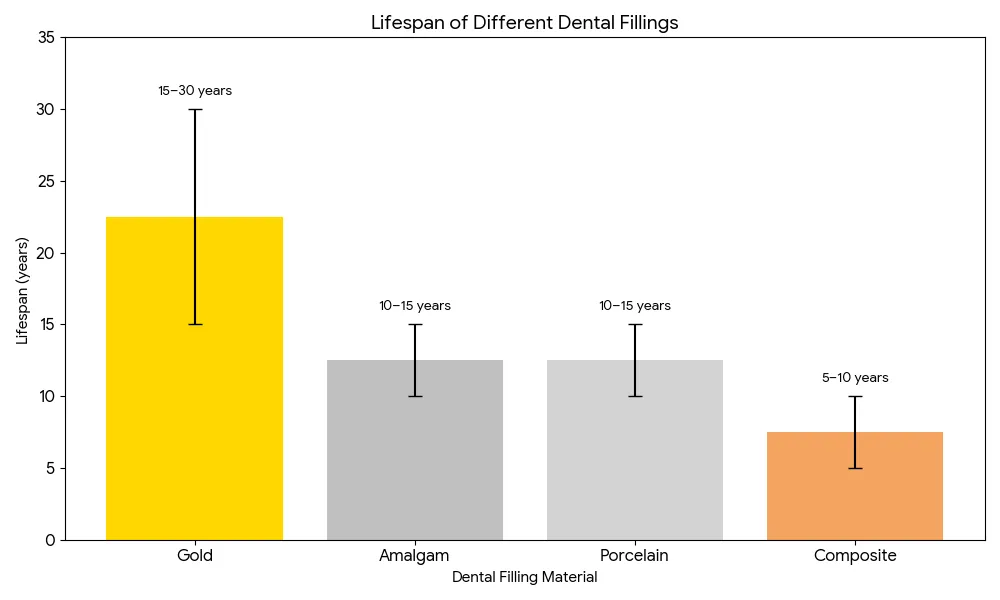When a tooth becomes decayed or damaged, a dental filling is one of the most effective and commonly used treatments to restore it. Cavities do not repair themselves, and without intervention, they can lead to pain, infection, or eventual tooth loss. Understanding how tooth fillings are done offers clarity and reassurance for patients preparing for treatment.
This guide explores the process in practical detail, what happens, what materials are used, how long they last, and what to expect before, during, and after a filling.
When Do You Need a Tooth Filling?
Tooth decay often progresses without early warning signs. Many people don’t realise they have a cavity until it’s spotted during a routine dental examination. However, some symptoms may indicate that a filling is needed:
- Sensitivity to hot, cold, or sweet food and drink
- A visible dark spot or hole in the tooth
- Pain or discomfort when biting
- Food is getting trapped in the same area repeatedly
- A chipped or worn-down tooth surface
Even if these signs are absent, attending regular dental check-ups is vital, as decay detected early can usually be treated with a simple filling.
Common Materials Used in Tooth Fillings
Before looking at how tooth fillings are done, it’s useful to understand the materials involved. The choice of material affects durability, appearance, and cost. Here’s a comparison of the most commonly used types:
Amalgam Fillings
Silver-coloured and made from a mixture of metals, including mercury, silver, tin, and copper. They’ve been used in dentistry for over a century due to their strength and longevity.
- Best for: Molars and premolars exposed to heavy chewing
- Average lifespan: 10–15 years or more
- Consideration: Not tooth-coloured; some concerns over mercury content, although the FDA advises they are safe for most patients
Composite Fillings
Tooth-coloured and made from a resin material that blends in naturally.
- Best for: Front teeth or visible areas
- Average lifespan: 5–10 years
- Benefit: Aesthetic finish and strong bond to the tooth
Glass Ionomer Fillings
Often used in children’s teeth or non-load-bearing areas. These release fluoride, helping protect against further decay.
- Best for: Baby teeth or fillings near the gumline
- Average lifespan: Up to 5 years
Gold and Porcelain
Gold is highly durable, while porcelain provides a natural appearance. These are often used in inlays or onlays.
- Best for: Patients seeking durability (gold) or a cosmetic match (porcelain)
- Consideration: Typically more expensive and may require multiple appointments
For patients exploring their options, Birchgrove Dental offers a range of modern filling materials tailored to each case, including composite and amalgam options suited to both cosmetic and functional needs.
How Tooth Fillings Are Done: A Detailed Walkthrough
Understanding how tooth fillings are done helps demystify the process. It involves removing the decayed portion of a tooth, preparing the cavity, and placing a suitable material to restore the tooth’s structure and function.
Step-by-Step Breakdown:
- Numbing the Area
A local anaesthetic is used to numb the affected tooth and surrounding area, making the procedure virtually painless. In some minor cases, anaesthesia may not be necessary. - Removing the Decay
The dentist uses a drill or other specialist tool to remove the decayed parts of the tooth. Care is taken to remove only what’s necessary, preserving as much healthy tooth as possible. - Preparing the Tooth
Once cleaned, the cavity is shaped and etched to help the filling adhere properly. For deep cavities, a liner may be applied to protect the nerve. - Placing the Filling
The chosen material, whether composite, amalgam, glass ionomer, or gold, is carefully inserted. Composite fillings are layered and hardened using a curing light. Amalgam is shaped and set in one application. - Shaping and Polishing
After placement, the dentist shapes the filling to restore the natural contours of the tooth and polishes it to a smooth finish. This ensures comfort and helps prevent plaque build-up. - Adjusting the Bite
You’ll be asked to bite down on articulating paper, which helps the dentist identify any high spots. If needed, the filling is adjusted so that your bite feels balanced and comfortable.
What to Expect After a Filling
Mild sensitivity following a filling is common and usually settles within a day or two. Depending on the depth of the filling and the material used, it may take slightly longer for things to return to normal.
General aftercare tips include:
- Avoid chewing on the filled tooth for a few hours
- Steer clear of very hot, cold, or sugary items immediately after treatment
- Maintain good oral hygiene with a soft-bristled brush and fluoride toothpaste
- Contact your dentist if pain persists beyond a few days or worsens
How Long Do Tooth Fillings Last?
The longevity of a dental filling depends on the material used and how well it’s cared for. Below are average lifespan estimates:
Good oral hygiene and avoiding habits such as teeth grinding or chewing hard foods can extend a filling’s life.
Are Dental Fillings Safe?
Modern dental fillings are generally safe for the vast majority of patients. The primary safety concern surrounds amalgam fillings due to their mercury content. However, extensive research has shown that they are stable and safe when used appropriately.
As per the BDA, amalgam is no longer recommended for children under 15, pregnant women, and those who are breastfeeding, unless no suitable alternative is available.
What Are the Alternatives to Fillings?
In cases where decay is too extensive for a standard filling, other options may be more suitable:
- Crowns: For severely damaged or weakened teeth
- Inlays or Onlays: Custom-made restorations for larger cavities
- Root Canal Treatment: If decay has reached the tooth’s nerve
- Fissure Sealants: Preventive treatment to protect vulnerable teeth, especially in children
Preventing the Need for Future Fillings
The most effective way to avoid future fillings is through prevention:
- Brush twice a day using fluoride toothpaste
- Clean between your teeth daily with floss or interdental brushes
- Limit intake of sugary snacks and acidic drinks
- Schedule regular dental check-ups and cleanings
- Use fluoride treatments or sealants when recommended
These habits help maintain strong, cavity-resistant enamel and reduce the risk of tooth decay.
Final Thoughts
Knowing how tooth fillings are done empowers patients to approach treatment with confidence and clarity. The process is simple, effective, and often completed in a single visit. With proper oral care and routine check-ups, a well-placed filling can preserve your natural tooth for many years.
If you suspect a cavity or are due for a check-up, Birchgrove Dental offers a calm, professional setting with experienced clinicians ready to advise you on the most appropriate treatment for your smile. Book an appointment today to stay ahead of dental decay and keep your teeth in top condition.






